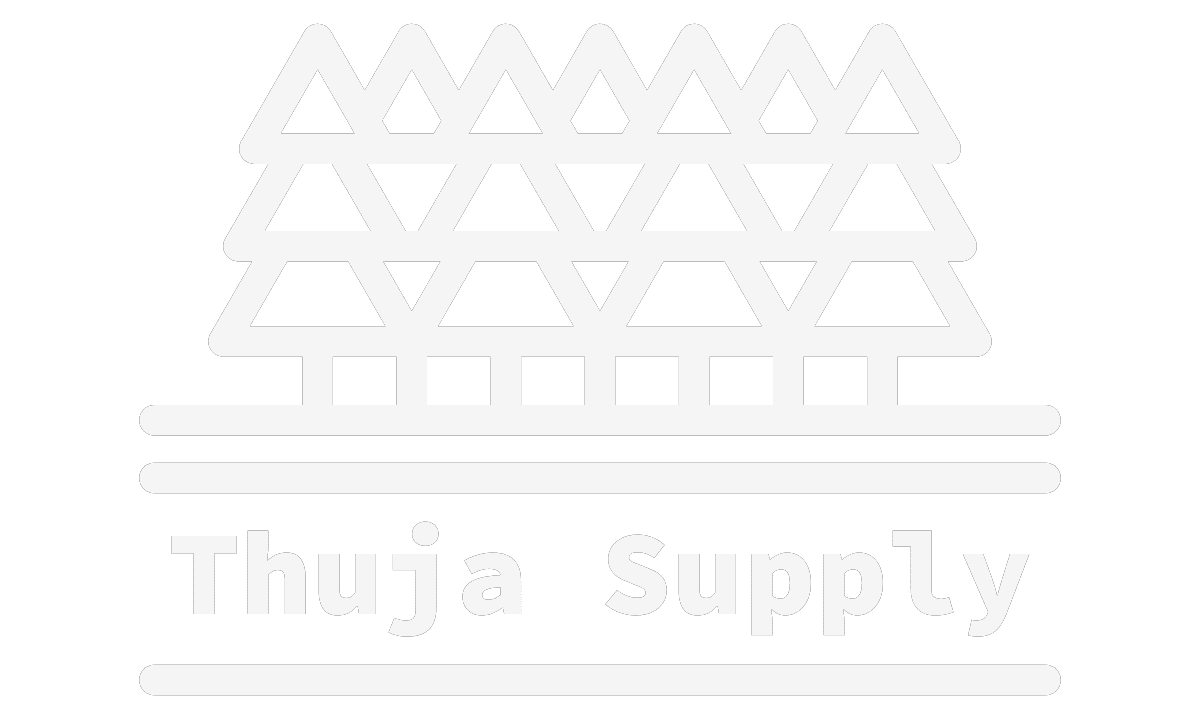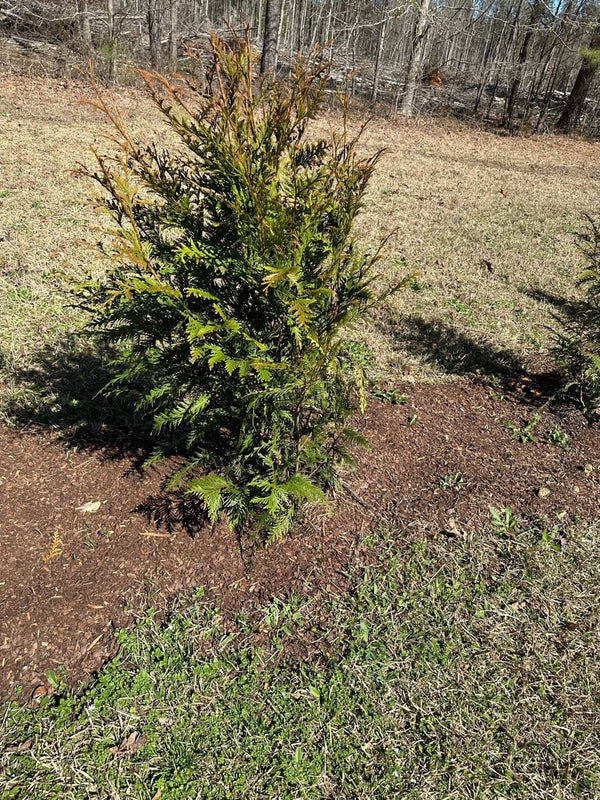If you're looking to create an evergreen privacy screen or windbreak, the Thuja Green Giant is an excellent choice. Known for its rapid growth, hardiness, and low maintenance, the Thuja Green Giant has become a popular choice for homeowners and landscapers. In this blog post, we'll walk you through the step-by-step process of propagating these fantastic trees.
Understanding the Thuja Green Giant
Before we dive into the propagation process, let's quickly cover what a Thuja Green Giant is. It's a hybrid evergreen tree, a cross between Thuja standishii and Thuja plicata. It can grow up to 3 to 5 feet per year until it matures, ultimately reaching heights between 50 to 60 feet, with a width of 12 to 20 feet. This tree is resistant to many diseases and pests and can thrive in a wide range of soil conditions.
Propagation Methods
There are two primary methods to propagate Thuja Green Giants: from seeds or cuttings. While propagation from seeds is possible, it's less common due to the lengthy germination period and higher risk of failure. Propagation from cuttings, on the other hand, is the most popular method, as it ensures the offspring will maintain the parent plant's genetic characteristics. In this guide, we'll focus on the propagation process using cuttings.
Propagating Thuja Green Giants from Cuttings
Step 1: Choosing and Preparing the Parent Tree
The first step is to choose a healthy, mature Thuja Green Giant from which you'll take cuttings. The parent tree should be robust, free from diseases and pests, and have a strong growth pattern. It's best to take cuttings early in the morning, as the tree will be well-hydrated, resulting in a higher success rate. Avoid taking cuttings during periods of high temperatures or drought, as the parent tree may be stressed, impacting the health of the cuttings.
Step 2: Collecting Cuttings
Choose semi-hardwood branches for cuttings, which are branches from the current year’s growth that have started to mature but are not fully woody. They should be about 6 to 8 inches long. Use a sharp, clean pair of pruning shears to make a clean cut just below a node (where leaves attach to the branch). Remove any foliage from the lower third to half of the cutting to prevent moisture loss and avoid rotting when planted.
Step 3: Rooting Hormone and Planting
To increase the success rate, apply a rooting hormone to the cut end of the cutting. This stimulates root growth and helps the cutting establish itself more quickly. Once you've applied the hormone, plant the cutting in a container filled with a mixture of equal parts perlite and peat moss, which will provide the ideal conditions for root development.
Step 4: Caring for the Cuttings
Place the cuttings in a location with indirect sunlight and keep the growing medium moist but not waterlogged. Enclosing the cuttings with a plastic bag or placing them in a mini-greenhouse can create a humid environment beneficial for root development.
Step 5: Transplanting the Cuttings
Once your Thuja cuttings have developed a robust root system - usually after about 8-12 weeks - they're ready for transplanting. But before this, harden them off for a week or two by gradually exposing them to outdoor conditions. Start with a few hours a day, then increase the time daily. This will prevent the shock that can occur from sudden changes in temperature, light, and wind.
When the cuttings have hardened off, you can transplant them to their permanent location. Choose a well-draining area with full sun to partial shade. Dig a hole twice as wide and just as deep as the root ball of your cutting. Place the cutting in the hole, ensuring that the top of the root ball is level with the soil surface. Backfill the hole, firm the soil gently around the base of the cutting, and water thoroughly.
Step 6: Post-Transplant Care
While Thuja Green Giants are drought-tolerant once established, newly planted trees will need regular watering. Water them deeply once or twice a week, allowing the soil to dry out between waterings. Avoid overwatering, as this can lead to root rot.
Monitor your newly transplanted Thujas for any signs of stress or disease. If you notice any browning or drooping foliage, adjust your care routine as needed. Remember that trees transplanted from cuttings will take a bit longer to establish than nursery-grown trees, so patience is key.
Conclusion
Propagating Thuja Green Giants may seem like a daunting task, but with careful preparation, a bit of patience, and attention to detail, you can successfully cultivate these beautiful, fast-growing trees from cuttings. Whether you want a lush, evergreen privacy screen or just love the look of these majestic trees, propagating Thuja Green Giants can be a rewarding gardening project. Happy planting!
Remember that each Thuja Green Giant is unique, and while this guide provides general advice, some trial and error may be necessary to perfect your propagation techniques. Keep experimenting, keep learning, and don't get discouraged if your first few attempts aren't as successful as you'd hoped. With each attempt, you'll gain more experience and improve your chances of propagation success.
1. What is the best time of year to propagate Thuja Green Giants? The best time to propagate Thuja Green Giants is in the late summer or early fall when the new growth begins to harden.
2. Can I propagate Thuja Green Giants from seeds? Yes, but propagation from seeds is less common due to a lengthy germination period and a higher risk of failure.
3. How long does it take for cuttings to root? Cuttings usually take around 8-12 weeks to develop a robust root system.
4. How often should I water the cuttings? Keep the growing medium moist but not waterlogged. This often means watering lightly every day or two, depending on your local climate and weather.
5. Should I use a rooting hormone for Thuja Green Giant cuttings? Using a rooting hormone can increase the success rate of your cuttings by promoting quicker root growth.
6. How can I increase the chances of successful propagation? Ensuring the parent tree is healthy, taking cuttings correctly, and providing optimal growing conditions can all increase your success rate.
7. Why are my cuttings turning brown or wilting? This could be a sign of overwatering, underwatering, or exposure to extreme temperatures. Ensure your cuttings are in a stable environment and monitor their moisture levels.
8. Can I propagate Thuja Green Giants in water? While some plants can be propagated in water, Thuja Green Giants are typically propagated in a soil mix, such as a blend of peat moss and perlite.
9. Why are the leaves of my Thuja cuttings turning yellow? Yellowing leaves can be a sign of overwatering, under watering, or a lack of nutrients. Review your care routine and adjust as needed.
10. Can I propagate Thuja Green Giants in the winter? It's best to propagate Thujas in late summer or early fall. Winter propagation can be more challenging due to colder temperatures and less natural sunlight.
11. How large should my Thuja cuttings be? Cuttings should be about 6-8 inches long and taken from semi-hardwood growth.
12. Why haven’t my cuttings developed roots? The lack of root development could be due to a number of factors, such as inadequate moisture, insufficient light, or not using a rooting hormone.
13. What should I do if the propagated Thujas show no growth after transplanting? First, make sure you’re giving the transplants enough time to establish – growth may not be immediately visible above ground. If after a few months there’s still no sign of growth, the cuttings may not have successfully rooted.
14. How many Thuja cuttings can I plant in one pot? It's best to plant each cutting in its own pot to prevent competition for resources and avoid the spread of disease or pests.
15. How long does it take for Thuja Green Giants to reach maturity? Thuja Green Giants are fast-growing and can reach their mature height of 50-60 feet within 10-15 years when properly cared for.
16. What type of soil is best for Thuja Green Giants? Thuja Green Giants can adapt to a wide range of soil conditions, but they prefer well-drained, loamy or sandy soil.
17. Can I propagate a Thuja Green Giant if the parent plant is diseased? It's best to take cuttings from a healthy, disease-free parent plant. Propagating from a diseased plant can transfer the disease to the cuttings.
18. Do Thuja Green Giants need full sun? Thuja Green Giants do best in full sun to partial shade. They need at least four hours of direct, unfiltered sunlight each day.
19. When should I fertilize Thuja Green Giants? Newly planted Thujas can benefit from a balanced slow-release fertilizer in the spring. Once established, they typically don’t require regular fertilization unless the soil is deficient in nutrients.
20. How much space should I leave between each Thuja Green Giant when planting? To create a privacy screen or hedge, plant Thuja Green Giants about 5-6 feet apart. For individual trees, leave a space of at least 10-12 feet to allow for their mature width.

